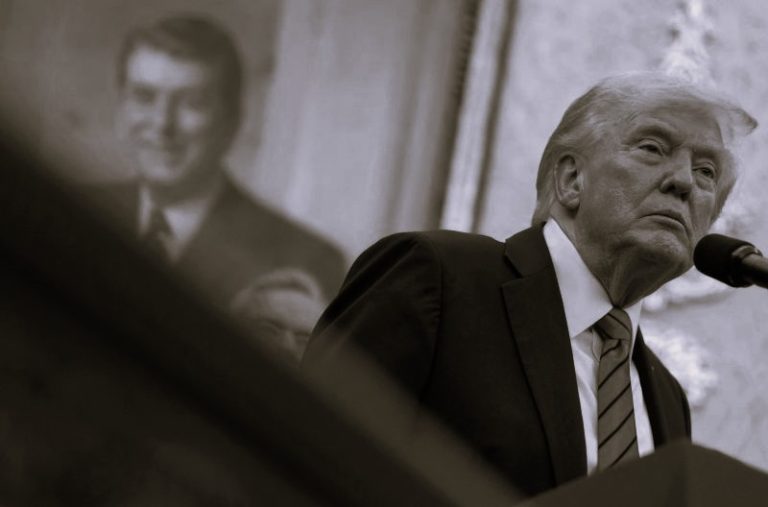
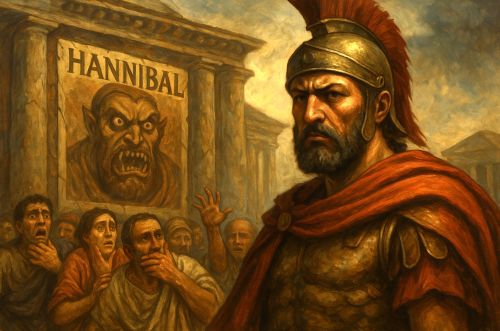
The propaganda worked because it spoke to universal anxieties, the terror of disorder, the fragility of civic unity, and the fear that Rome’s greatness might one day unravel from within.

By Matthew A. McIntosh
Public Historian
Brewminate
Introduction
When the armies of Hannibal Barca crossed the Alps in 218 BCE, the Roman Republic confronted not merely a military invader but the embodiment of its deepest anxieties. The Carthaginian general’s daring campaign struck at the heart of Roman pride, unraveling the illusion of invincibility that had accompanied decades of expansion. Yet, in the face of catastrophic defeats at Trebia, Lake Trasimene, and Cannae, Roman leaders transformed the specter of fear into a political weapon. They crafted an image of Hannibal as the cruel and faithless enemy of civilization, a figure whose supposed savagery justified every Roman loss and every act of vengeance that would follow. From this moment, propaganda became as essential to Roman victory as the sword.1
The phrase Hannibal ad portas, “Hannibal is at the gates,” echoed through the Republic for generations, symbolizing more than a literal threat. It became a cultural shorthand for existential crisis, invoked by statesmen and dramatists alike to summon unity in the face of panic. In the Roman imagination, Hannibal ceased to be a man of strategy and became a force of chaos, a punishment sent by the gods for Rome’s moral failings. This transformation was deliberate. It turned terror into discipline and defeat into virtue, recasting every Roman setback as a test of fortitude.2
Roman historians and orators later amplified this portrayal with near-religious fervor. Livy wrote of Hannibal’s cruelty and deceit as though they were traits innate to all Carthaginians, drawing upon the notion of fides Punica, “Punic faith,” to imply that treachery was a Carthaginian birthright.3 The same narrative appears in Cicero’s speeches, where Hannibal functions less as a historical figure than as a moral warning: a reminder of how easily Rome could succumb to corruption if it strayed from discipline and unity. In this way, the Roman memory of Hannibal served both as political instruction and national myth, binding citizens together through a shared fear of the foreign and the unknown.4
The demonization of Hannibal thus reveals more about Rome than about Carthage. It exposes a Republic skilled in the art of narrative control, able to transform even the threat of annihilation into a reaffirmation of its moral order. By shaping Hannibal into a monstrous “other,” Roman elites constructed a story that explained every danger, justified every conquest, and preserved their fragile cohesion through the illusion of righteousness.5
Roman Historiography and the Politics of Fear

The Roman historical tradition developed in the crucible of war, where the act of writing history was inseparable from the act of preserving morale. From the earliest annalists to the mature works of Livy and Polybius, the story of Hannibal’s invasion was told as both an epic of endurance and a parable of divine testing. When Cannae left tens of thousands of Roman soldiers dead, historians could not simply recount a military catastrophe; they had to narrate a moral drama. Livy, for instance, described Rome’s suffering as providential, a punishment meant to restore discipline and faith in the gods. In this view, Hannibal’s victories were permitted by the divine not because of Carthaginian strength, but because of Roman weakness, and his eventual failure proved Rome’s righteousness.⁶
Such storytelling was not merely retrospective justification. It shaped how Romans understood civic virtue in real time. Senators and magistrates invoked the terror of Hannibal’s approach to call for unity and obedience, framing dissent as treasonous. Polybius, though a Greek historian writing with Roman sympathies, observed that fear itself became an instrument of government, a means of rallying the citizenry around the Senate’s leadership. The phrase Hannibal ad portas thus carried political force: it reminded citizens of their vulnerability while reinforcing the necessity of centralized authority.7 The enemy’s proximity symbolized not only danger from without but also the ever-present threat of disorder within.
The rhetoric of fear extended beyond the Senate into public ritual and religious observance. During the darkest years of the Second Punic War, Romans performed extraordinary sacrifices, consulted the Sibylline Books, and proclaimed public fasts, all acts that dramatized communal submission to divine will.8 These gestures reinforced the message that moral failing, not military strategy, had invited disaster. As a result, the citizenry was taught to locate salvation not in innovation or dissent, but in obedience to tradition and hierarchy. Hannibal, in this schema, became the negative image of Roman virtue: disciplined, yes, but devoted to false gods and deceitful purposes.
The historiographical framing of the war also served to naturalize Roman aggression. By portraying Hannibal as the perpetual aggressor, even though his invasion followed Rome’s interference in Iberia, historians could recast the Republic’s expansion as defensive necessity.9 The rhetorical inversion of victim and oppressor allowed Rome to wage total war while preserving its self-conception as a just and pious state. Hannibal’s every maneuver was written as evidence of perfidy; Rome’s every retaliation as evidence of duty.
Ultimately, Roman historiography made Hannibal not only a villain but a mirror, an embodiment of all that Romans feared becoming. In this sense, the politics of fear were also the politics of identity. To resist Hannibal was to resist chaos, moral decay, and foreign corruption. The literary record that survives, though refracted through centuries of Roman editing, still bears the fingerprints of this psychological project: a campaign not only to win a war, but to define what it meant to be Roman.10
The Stereotype of Punic Perfidy
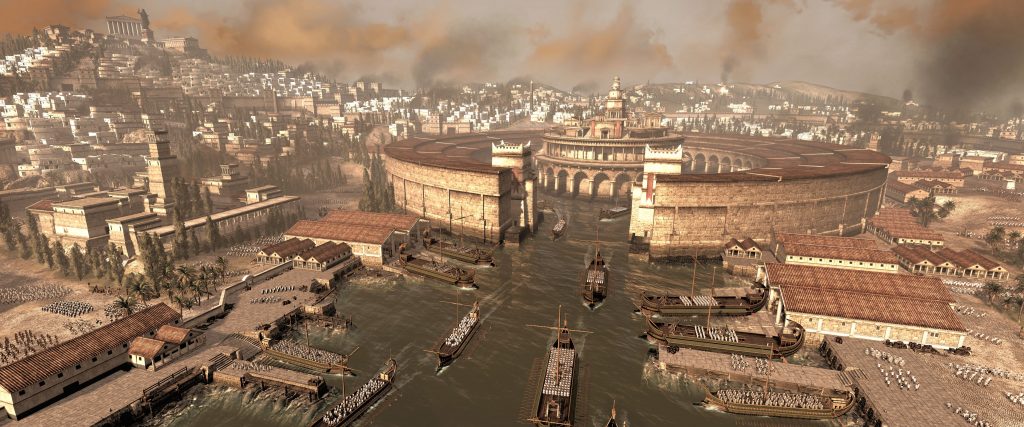
Roman accounts of the Punic Wars relied heavily on moral polarization, and no concept was more potent in this regard than the accusation of fides Punica, “Punic faith.” This phrase, which became synonymous with treachery, condensed centuries of hostility into a moral maxim: Carthaginians could not be trusted. Roman writers claimed that deceit was as native to the Carthaginian soul as piety was to the Roman. The idea was not born of isolated incidents but constructed through repetition, transforming political rivalry into moral law. By embedding this stereotype into collective consciousness, the Romans ensured that every Carthaginian act, however rational or diplomatic, could be interpreted as proof of congenital duplicity.11
The origins of the stereotype can be traced to Rome’s narrative of the First Punic War. According to Livy and later commentators, the Carthaginians had violated treaties, betrayed allies, and sought advantage through dishonor. Polybius, while more restrained, still echoed Roman assumptions of moral superiority, contrasting the steadfastness of Roman agreements with Carthaginian opportunism.12 These stories ignored the complex realities of Mediterranean diplomacy, where both powers routinely broke truces when expedient. Instead, the image of Punic faithlessness created a usable moral framework that justified Rome’s imperial ambitions. By making deceit the essence of Carthage, Romans could frame every subsequent conflict as an act of self-defense against treachery.
As the Second Punic War unfolded, the stereotype of Punic perfidy became personal through its application to Hannibal himself. Livy and Valerius Maximus depicted him as the living embodiment of falsehood, educated in the arts of guile, oath-breaking, and cruelty.13 Roman audiences were told that Hannibal swore eternal hatred toward Rome at his father’s altar, an apocryphal tale that cast his entire career as a mission of vengeance. This legend, though unverified by contemporary evidence, became one of the most enduring narratives in Roman cultural memory. It reduced Hannibal’s military genius to pathology and recast strategic brilliance as moral corruption.
The moral binary between Roman fides (faith) and Punic deceit also reinforced social hierarchies within the Republic. By holding up Carthaginian “perfidy” as the moral opposite of Roman virtue, Roman elites strengthened their own claims to leadership. Cicero later invoked fides Punica as a rhetorical tool in political oratory, using it to condemn domestic opponents who appeared untrustworthy or disloyal.14 Thus, what began as wartime propaganda evolved into a permanent fixture of Roman moral discourse. The external enemy was internalized, providing a language through which corruption and betrayal at home could be condemned without naming individuals directly.
Archaeological and epigraphic evidence from Carthage reveals no trace of this supposed moral degeneracy. Punic religion, law, and trade were governed by codes as structured and formalized as Rome’s own. Yet Roman historians rarely acknowledged Carthage’s administrative sophistication, preferring to present its culture as effeminate, mercantile, and decadent.15 This rhetorical contrast between martial virtue and commercial greed was vital to Roman self-definition. By demonizing Carthaginian pragmatism as moral weakness, Romans justified the economic motives that underpinned their own expansion.
In the end, the trope of Punic perfidy outlived the city itself. Long after Carthage was razed in 146 BCE, the phrase continued to haunt Roman literature, law, and education. It reappeared in moral treatises, political satire, and military histories, a reminder that moral myth could prove as enduring as empire. The stereotype was so deeply ingrained that even Roman authors who admired Hannibal’s intellect, such as Nepos, could not fully escape it.16 Through this lasting distortion, the Romans achieved one of propaganda’s most enduring victories: they destroyed not only Carthage’s armies and cities, but its reputation for all time.
Demonizing the Man: Hannibal as the Barbarian Other
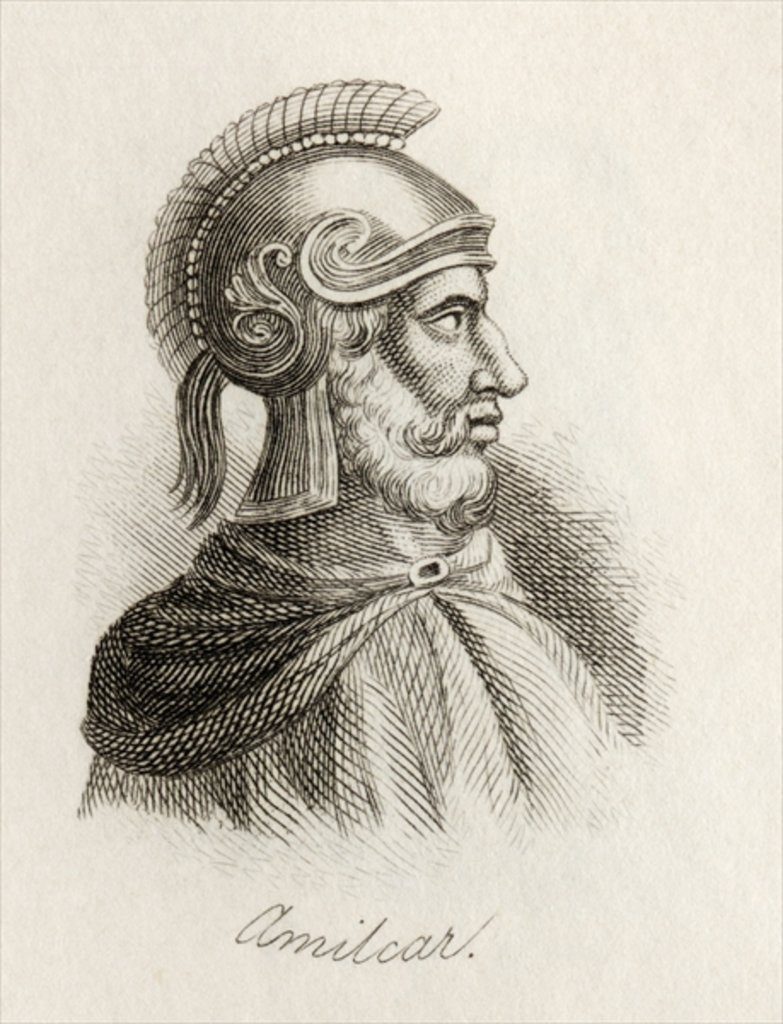
The Roman portrayal of Hannibal went beyond political defamation; it became a moral mythology. Roman writers depicted him as a being outside the human order, a violator not only of treaties but of nature itself. The transformation of a brilliant general into a barbaric monster served a clear function: it allowed Rome to turn its fear into virtue. By inventing a figure of inhuman malice, the Republic could present its wars as struggles between civilization and savagery. Livy described Hannibal’s supposed delight in bloodshed, his contempt for the gods, and his disregard for sacred boundaries, presenting him as an antithesis to the disciplined Roman commander.17 Polybius, though more balanced, could not fully escape the gravitational pull of Roman narrative. Even when admiring Hannibal’s strategic genius, he couched that praise in caution, as if too much admiration risked moral contagion.
Stories of Hannibal’s cruelty circulated widely, functioning as moral parables. Roman authors claimed that he executed Roman prisoners, massacred civilians, and desecrated temples, none of which are supported by verifiable Carthaginian or neutral accounts.18 These allegations reflected Roman anxieties more than Carthaginian practices. The legend of the blood oath sworn by the young Hannibal before his father Hamilcar symbolized the supposed congenital hatred of Rome inherited through generations. Such imagery transformed familial loyalty into pathology, turning filial devotion into evidence of savagery. Through repetition in histories and school texts, Hannibal became less a man and more a mythological threat, an emblem of foreign rage unchecked by Roman reason.
The Romans also weaponized cultural difference to reinforce the image of barbarism. Carthage’s North African origins, its Semitic language, and its distinct religious rituals became points of derision in Roman literature. The presence of war elephants, Numidian cavalry, and Iberian mercenaries in Hannibal’s army offered visual proof of foreign monstrosity to Roman audiences.19 In the Roman imagination, these diverse troops represented chaos and moral disorder, the inversion of the disciplined legions. The spectacle of elephants trampling Roman soldiers became a symbol of the unnatural, of beasts and men united in hatred of the Republic. Roman dramatists and later painters echoed this imagery, using it to warn that the abandonment of Roman virtue would invite the return of the barbarian within.
The construction of Hannibal’s barbarity also served to humanize Rome’s brutality. As the war dragged on, Roman conduct grew increasingly ruthless: mass enslavements, scorched-earth campaigns, and the eventual annihilation of Carthage were all rationalized as moral necessity. By portraying Hannibal as cruel, Romans could view their own cruelty as justice.20 This inversion of ethics, where victory equaled virtue, became central to the Republic’s self-conception as the guardian of order. The mythic Hannibal thus allowed Romans to commit atrocities while believing themselves divinely sanctioned. In this way, the enemy became both the mirror and the absolution of their own violence.
In the end, the figure of Hannibal transcended history to inhabit the realm of cultural archetype. He became Rome’s eternal antagonist, a specter reappearing whenever moral panic or political crisis demanded an external villain. Cicero’s generation still invoked “Hannibal at the gates” to describe moments of domestic peril, long after the Carthaginian had died in exile.21 The persistence of this imagery reveals the true success of Roman propaganda: not the defeat of an enemy, but the creation of a symbol so powerful that it outlived its subject. Hannibal’s memory, distorted but immortal, served Rome as both warning and vindication, a reminder that every empire requires its monster.
Propaganda and the Preservation of Roman Identity

The campaign to vilify Hannibal did more than demonize an adversary; it defined what it meant to be Roman. The contrast between Roman virtue and Carthaginian vice provided a moral vocabulary through which the Republic explained its own survival. Fear of Hannibal was transformed into faith in the Senate, obedience to tradition, and reverence for divine order. Roman leaders seized upon this fear to consolidate unity during moments of panic, particularly after the disasters at Lake Trasimene and Cannae. Livy’s account of the Senate’s steadfastness amid terror presented Roman endurance as proof of moral superiority, and the people’s submission to senatorial authority as an act of civic piety.22 The narrative turned political control into moral duty, fusing patriotism with religion.
Hannibal’s vilification also shaped Roman education and public morality. For centuries, schoolmasters taught the Punic Wars as moral allegory: Rome triumphed because it possessed virtus, courage rooted in discipline and sacrifice, whereas Carthage fell because it embodied deceit and greed.23 Children learned that Hannibal’s cunning was not the mark of intelligence but of corruption. In this way, propaganda seeped into pedagogy, ensuring that each new generation inherited both pride and prejudice. This moral framework persisted even as Rome expanded into a cosmopolitan empire. The Roman elite continued to invoke the Hannibalic model to contrast their supposed moderation with the chaos of conquered peoples.
Cicero’s speeches reveal how deeply this trope had penetrated political life. When condemning corruption or moral decay, he often invoked the ghost of Hannibal as a metaphor for internal threat.24 “Hannibal at the gates” no longer referred to an external enemy but to the erosion of civic virtue itself. The phrase’s transformation from literal warning to moral allegory demonstrates how Rome’s fear of invasion became a fear of moral collapse. The same propaganda that had once unified the Republic against Carthage now sustained a moral order under the late Republic’s internal tensions. Hannibal was dead, but his shadow lingered, an ever-present reminder that Rome must remain vigilant lest the barbarian return in spirit.
The myth also served to absolve Rome’s growing imperial cruelty. As the Republic expanded into the eastern Mediterranean, its conquests were justified as preemptive defenses against future “Hannibals.”25 The image of the lurking foreign enemy legitimized endless war. Roman generals claimed to wage campaigns not for profit or power but to protect civilization itself. In this way, the propaganda born of one enemy became the ideological foundation of empire. By defining themselves against a mythic other, Romans could sustain the illusion that conquest was a moral act. The result was an identity dependent on opposition, an empire that required enemies to remain righteous.
In the centuries that followed, the rhetorical figure of Hannibal endured as a test of Roman identity. Historians of the imperial age, such as Florus and Appian, continued to use his memory as a measure of Roman greatness.26 By retelling the story of Hannibal’s defeat, they reaffirmed the virtues of courage, discipline, and divine favor that had supposedly guaranteed Rome’s destiny. What began as wartime propaganda evolved into cultural scripture, a foundational myth that justified both the Republic’s origins and the Empire’s continuance. Rome had conquered not only Carthage but history itself, ensuring that even its enemies spoke in a language shaped by Roman moral logic.
Memory, Myth, and the Afterlife of Fear
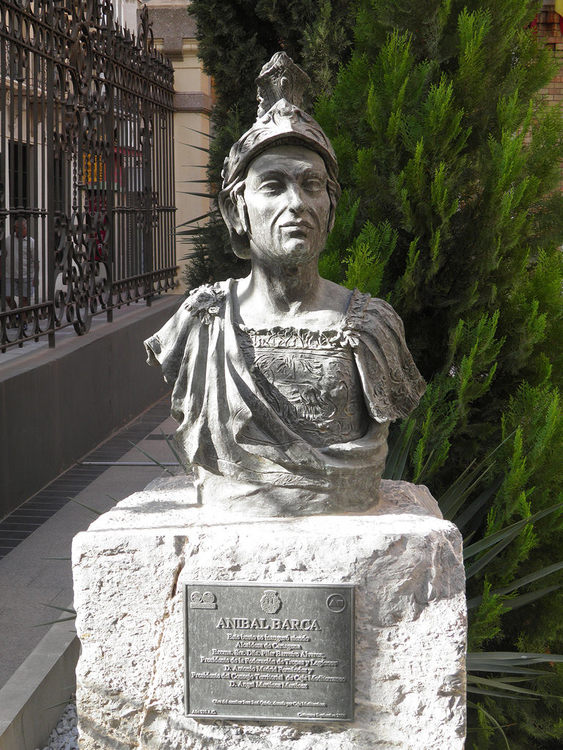
Long after the ashes of Carthage had cooled, the memory of Hannibal haunted Roman consciousness. His image persisted not merely as a historical recollection but as a moral emblem, a specter revived whenever Rome faced crisis or decline. Poets, statesmen, and historians alike invoked his name to evoke dread or moral warning. Cicero used “Hannibal at the gates” to describe corruption within the Senate, while later imperial writers reimagined him as the archetype of foreign menace.27 The phrase had become detached from its original context; it no longer referred to a man or even a war but to the universal fear of disorder. Rome had mythologized its most dangerous foe into a timeless moral metaphor.
This endurance was no accident. Roman culture was built upon the selective preservation of fear. In literature, theater, and public ritual, the memory of external threats reinforced the narrative of divine protection and civic virtue. The Roman state cultivated this memory through ceremonies, triumphal art, and anniversaries of victory.28 By remembering Hannibal as the embodiment of chaos, Romans could celebrate their survival as proof of divine favor. The collective anxiety of the Second Punic War thus became a recurring ritual of self-congratulation, a means of reasserting identity through controlled remembrance.
Yet the very persistence of the myth revealed a deep insecurity at the heart of Roman power. The Republic’s expansion into empire did not erase the fear that had once united it; rather, that fear became institutionalized. Historians such as Florus portrayed Hannibal’s war as the crucible in which Rome’s destiny was forged, while moralists used his story to warn against arrogance and complacency.29 Rome’s obsession with its own near-destruction created a paradoxical identity, an empire defined not by triumph alone, but by the memory of almost losing everything. In glorifying the threat, Rome ensured its eternal relevance.
By the late Empire, Hannibal had become less an enemy of Rome than a symbol of its moral history. His image appeared in rhetoric, art, and education as a reminder that vigilance was the price of greatness.30 The myth endured precisely because it met Rome’s psychological needs: it offered both the thrill of survival and the reassurance of moral superiority. Through the propaganda born in war, the Romans achieved a final, invisible conquest, the conquest of collective memory itself. Hannibal was dead, but Rome kept him alive to remind itself why it had to remain Rome.
Conclusion: Rome’s Greatest Victory Was Narrative
The Roman Republic triumphed not only through arms but through the mastery of perception. The destruction of Carthage eliminated a rival, but the vilification of Hannibal created a moral legacy that outlasted both cities. Roman propaganda converted fear into cohesion, transforming a near-defeat into a foundational myth of virtue. The stories that once terrified the citizenry were repurposed to glorify their endurance. Through selective memory, Rome turned a war of survival into proof of destiny, ensuring that its empire rested not merely on conquest, but on conviction.31
The smear campaign against Hannibal reveals the Republic’s sophisticated understanding of psychological warfare. By framing him as the embodiment of cruelty and deceit, Roman leaders gave their people a moral compass pointing always toward obedience and faith. The propaganda worked because it spoke to universal anxieties, the terror of disorder, the fragility of civic unity, and the fear that Rome’s greatness might one day unravel from within.32 In this sense, the myth of Hannibal was not about the Carthaginian at all; it was about Rome’s need to believe in its own virtue. The Republic could not destroy fear, so it learned to weaponize it.
Over time, the boundaries between fact and fabrication dissolved. Livy’s moral drama replaced the historical complexities recorded by Polybius, and later Roman writers embroidered new horrors onto the tapestry of memory.33 Yet even these distortions reveal truth of another kind, the truth of empire’s dependence on story. Rome’s power endured because it controlled the narrative of its enemies, shaping public imagination as effectively as it commanded legions. Hannibal became the Republic’s eternal foil: the barbarian who justified civilization, the traitor who made Roman loyalty sacred, the monster who sanctified the victors.
The legend of Hannibal stands as one of history’s most successful propaganda campaigns. It demonstrates how nations forge unity not only through triumphs but through terrors carefully remembered.34 By conquering memory, Rome ensured that its wars would always appear righteous and its enemies immoral. The phrase Hannibal ad portas remained on Roman lips for centuries, a whisper of panic turned into a proverb of pride. In the Roman imagination, the gates of the city were never entirely safe, for fear itself had become the guardian of empire.
Appendix
Footnotes
- Polybius, Histories, 3.33–34; Livy, Ab Urbe Condita, 21.1–4.
- Appian, Roman History: The Hannibalic War, 8.45; Cicero, De Officiis, 3.108.
- Livy, Ab Urbe Condita, 21.4.9; Valerius Maximus, Memorable Deeds and Sayings, 9.6.
- Cicero, Philippicae, 14.10; Pro Sestio, 58.
- Mary Beard, SPQR: A History of Ancient Rome (New York: Liveright, 2015), 190; Adrian Goldsworthy, The Fall of Carthage: The Punic Wars 265–146 BC (London: Cassell, 1994), 212.
- Livy, Ab Urbe Condita, 22.1–7.
- Polybius, Histories, 3.117–118.
- Appian, Roman History: The Hannibalic War, 8.50; Valerius Maximus, Memorable Deeds and Sayings, 1.1.
- Polybius, Histories, 3.15–17; Dexter Hoyos, Hannibal’s Dynasty: Power and Politics in the Western Mediterranean, 247–183 BC (London: Routledge, 2003), 144.
- Cicero, De Republica, 1.45; Beard, SPQR, 193.
- Livy, Ab Urbe Condita, 21.4.9; Valerius Maximus, Memorable Deeds and Sayings, 9.6.
- Polybius, Histories, 1.63–65.
- Livy, Ab Urbe Condita, 21.1–5; Valerius Maximus, Memorable Deeds and Sayings, 9.6.
- Cicero, Pro Sestio, 58; In Verrem, 2.5.168.
- Hoyos, Hannibal’s Dynasty, 201.
- Cornelius Nepos, Hannibal, 13; Beard, SPQR, 196.
- Livy, Ab Urbe Condita, 21.4–6.
- Polybius, Histories, 3.82–84; Appian, Roman History: The Hannibalic War, 8.50.
- Polybius, Histories, 3.33; Goldsworthy, The Fall of Carthage, 212.
- Dexter Hoyos, Mastering the West: Rome and Carthage at War (Oxford: Oxford University Press, 2015), 276.
- Cicero, Philippicae, 14.10; Cornelius Nepos, Hannibal, 13.
- Livy, Ab Urbe Condita, 22.51–54.
- Valerius Maximus, Memorable Deeds and Sayings, 3.2.
- Cicero, Pro Sestio, 58; De Officiis, 3.108.
- Polybius, Histories, 3.117–118; Hoyos, Mastering the West, 288.
- Florus, Epitome of Roman History, 1.22; Appian, Roman History: The Hannibalic War, 8.45.
- Cicero, Philippicae, 14.10; Cornelius Nepos, Hannibal, 13.
- Appian, Roman History: The Hannibalic War, 8.50; Polybius, Histories, 3.118.
- Florus, Epitome of Roman History, 1.22; Valerius Maximus, Memorable Deeds and Sayings, 3.2.
- Mary Beard, SPQR, 198; Goldsworthy, The Fall of Carthage, 289.
- Polybius, Histories, 3.118; Appian, Roman History: The Hannibalic War, 8.45.
- Livy, Ab Urbe Condita, 22.54; Cicero, De Officiis, 3.108.
- Hoyos, Mastering the West, 290.
- Beard, SPQR, 199.
Bibliography
- Appian. Roman History: The Hannibalic War. Translated by Horace White. Cambridge: Harvard University Press, 1912.
- Beard, Mary. SPQR: A History of Ancient Rome. New York: Liveright, 2015.
- Cicero, Marcus Tullius. De Officiis. Translated by Walter Miller. Cambridge: Harvard University Press, 1913.
- ———. De Republica. Translated by Clinton W. Keyes. Cambridge: Harvard University Press, 1928.
- ———. In Verrem. Translated by L. H. G. Greenwood. Cambridge: Harvard University Press, 1935.
- ———. Philippicae. Translated by Walter C. A. Kerr. Cambridge: Harvard University Press, 1926.
- ———. Pro Sestio. Translated by R. Gardner. Cambridge: Harvard University Press, 1958.
- Florus. Epitome of Roman History. Translated by E. S. Forster. Cambridge: Harvard University Press, 1929.
- Goldsworthy, Adrian. The Fall of Carthage: The Punic Wars 265–146 BC. London: Cassell, 1994.
- Hoyos, Dexter. Hannibal’s Dynasty: Power and Politics in the Western Mediterranean, 247–183 BC. London: Routledge, 2003.
- ———. Mastering the West: Rome and Carthage at War. Oxford: Oxford University Press, 2015.
- Livy. Ab Urbe Condita. Translated by B. O. Foster et al. 14 vols. Cambridge: Harvard University Press, 1919–1959.
- Nepos, Cornelius. Hannibal. In Lives of Eminent Commanders. Translated by J. C. Rolfe. Cambridge: Harvard University Press, 1929.
- Polybius. Histories. Translated by W. R. Paton. 6 vols. Cambridge: Harvard University Press, 1922–1927.
- Valerius Maximus. Memorable Deeds and Sayings. Translated by D. R. Shackleton Bailey. Cambridge: Harvard University Press, 2000.
Originally published by Brewminate, 10.30.2025, under the terms of a Creative Commons Attribution-NonCommercial-NoDerivatives 4.0 International license.


